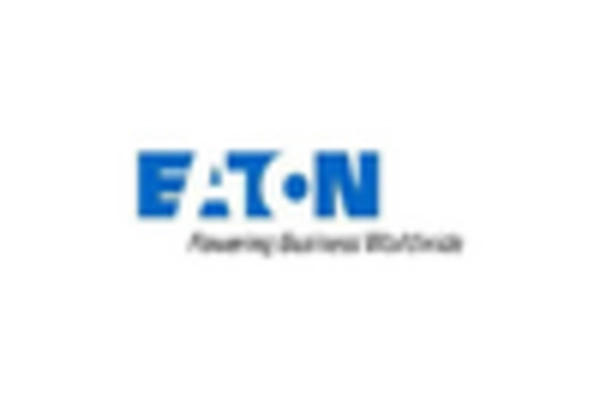Market Trends
Key Emerging Trends in the Europe Transformer market
Within the dynamic landscape of Europe's transformer market, companies employ various strategies to secure and enhance their market share positioning. Differentiation is a foundational strategy, as companies strive to distinguish their transformers by focusing on specific technologies, features, or applications. Some companies may emphasize the efficiency, reliability, or environmental sustainability of their transformers, aiming to meet the diverse needs of industries and utilities. Through differentiation, companies seek to establish a unique identity in the competitive European transformer market, attracting customers with tailored solutions.
Strategic collaborations and partnerships play a pivotal role in the transformer sector, given the complexity and interdependence of energy systems. Companies often engage in alliances with energy infrastructure developers, grid operators, or other industry stakeholders to expand their capabilities and offer comprehensive solutions. Collaborative ventures enable companies to address the evolving energy landscape, tap into emerging technologies, and navigate regional regulatory nuances. By forming strategic partnerships, companies not only strengthen their market share but also position themselves as integral contributors to the European energy ecosystem.
Government policies and regulations significantly shape the landscape of the European transformer market. Companies strategically align their operations with regional energy policies, quality standards, and sustainability targets to gain a competitive edge. Leveraging government incentives, certifications, and compliance with environmental regulations becomes crucial. Staying abreast of evolving policies and adapting strategies accordingly allows companies not only to enhance their market share but also contribute to the broader objectives of sustainable and resilient energy infrastructure in Europe.
Customer-centric strategies are paramount in the European transformer market, where end-users include utilities, industries, and renewable energy projects. Companies tailor their transformers to meet specific customer requirements, focusing on factors such as size, voltage ratings, and compatibility with renewable energy sources. Providing reliable, efficient, and environmentally friendly solutions is essential for building trust and loyalty in this market. Customer satisfaction and positive relationships contribute significantly to a company's market share growth.
Investment in research and development (R&D) remains a cornerstone strategy for companies aiming to stay competitive in the rapidly evolving transformer market in Europe. Innovation in transformer design, materials, and smart technologies allows companies to address emerging challenges and capitalize on market trends. By investing in R&D, companies not only differentiate their products but also contribute to the overall advancement of energy infrastructure, positioning themselves as leaders in the dynamic European transformer market.
Geographic expansion strategies are also pivotal as companies seek to enhance their market share in different regions of Europe. Each region may have unique energy demands, grid requirements, and environmental conditions. By strategically expanding into key markets, companies can tailor their transformer solutions to meet specific regional needs, build relationships with local stakeholders, and navigate diverse regulatory landscapes. This approach enables companies to effectively penetrate different markets and establish a robust presence in the European transformer sector.
In conclusion, market share positioning strategies in Europe's transformer market involve a multifaceted approach. Companies differentiate their products, engage in strategic collaborations, align with government policies, prioritize customer-centric solutions, invest in R&D, and strategically expand into key geographic markets. As Europe continues to transition towards a more sustainable and interconnected energy infrastructure, these strategies will likely evolve, reflecting the dynamic nature of the transformer market. Companies that can adeptly navigate these complexities will be well-positioned to thrive in this competitive and vital sector of the European energy landscape.









Leave a Comment